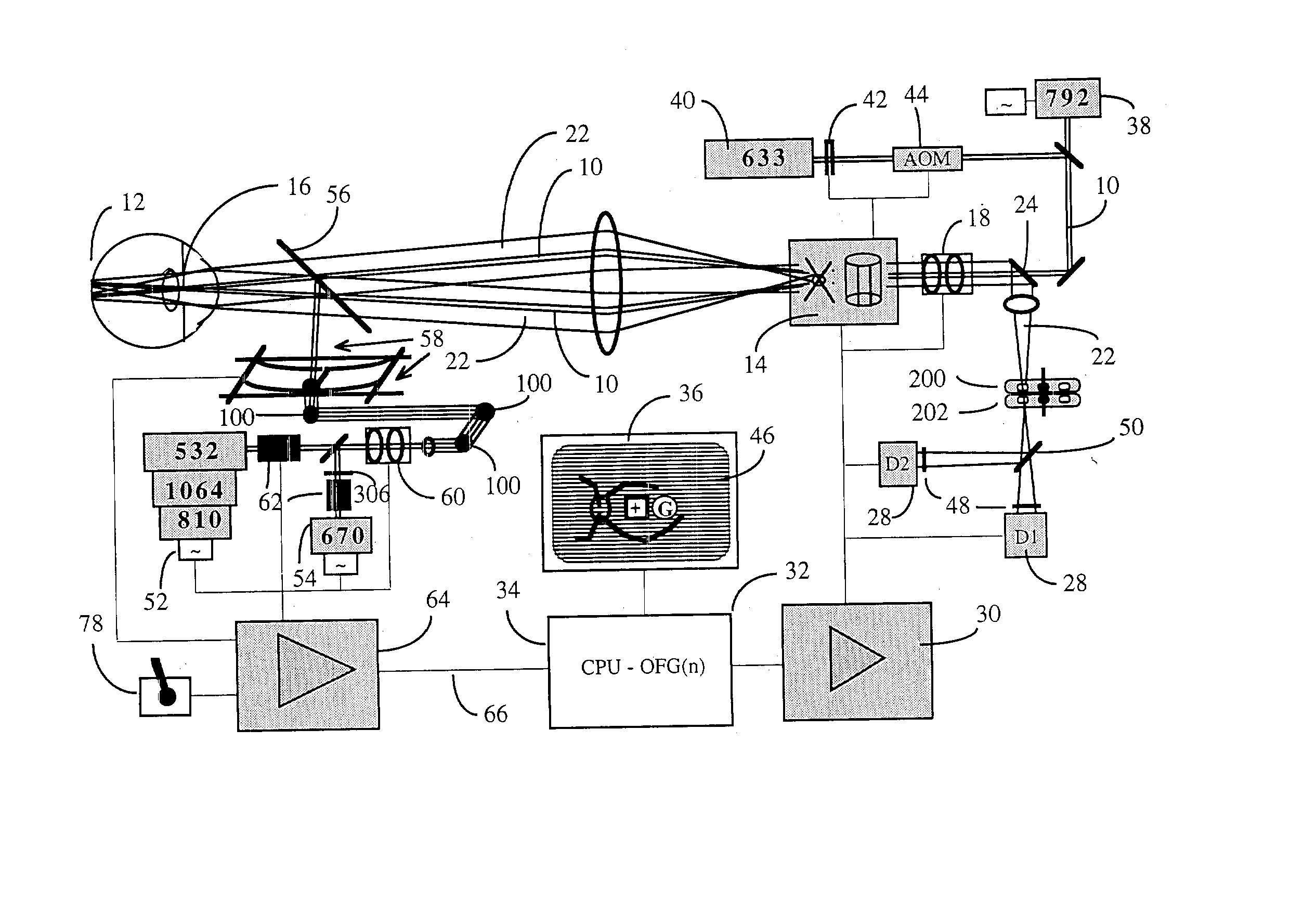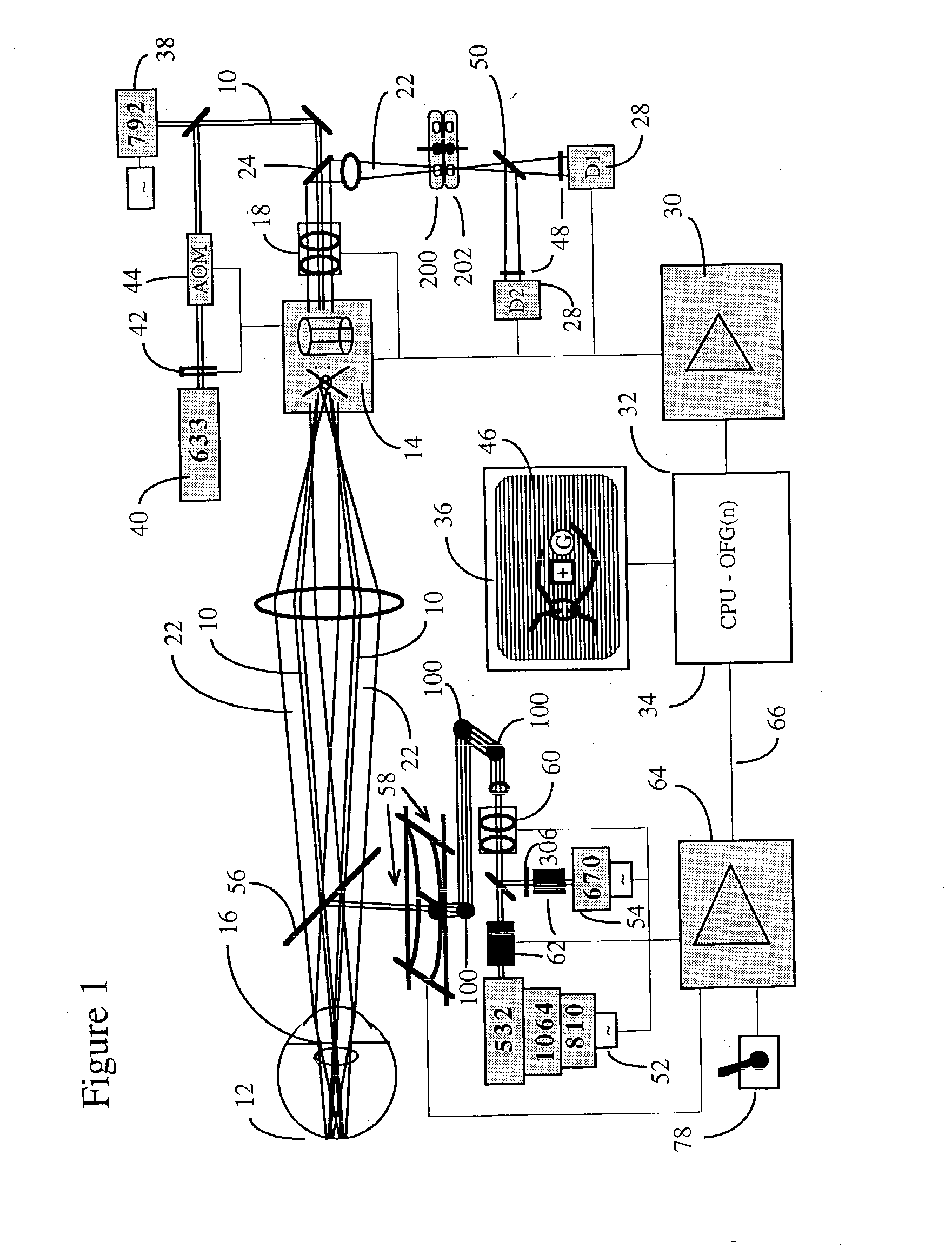Scanning laser ophthalmoscope optimized for selective retinal microphotocoagulation
a laser ophthalmoscope and selective technology, applied in the field of scanning laser ophthalmoscopes, can solve the problems of difficult adjustment of psychophysical testing, inability to image directly the impact of such therapeutic laser sources with a traditional co-pupillary scanning laser ophthalmoscope, and inability to accurately place and document, etc., to achieve the effect of convenient adjustment, convenient modification, and convenient adjustmen
- Summary
- Abstract
- Description
- Claims
- Application Information
AI Technical Summary
Benefits of technology
Problems solved by technology
Method used
Image
Examples
Embodiment Construction
[0101] A typical embodiment of the confocal scanning laser ophthalmoscope for retinal microphotocoagulation is illustrated in FIG. 1. The principles of scanning laser ophthalmoscopy are described in detail in the prior art (Pomerantzeff, Saban, Webb, Plesch). Features of the confocal scanning laser ophthalmoscope that are relevant to the invention are further discussed.
[0102] I. The Confocal Scanning Laser Retinoscope
[0103] A prefocussed Gaussian beam of laser light 10, e.g. consisting of a merger of polarized He--Ne 633 nm and diode 792 nm, and having an approximate diameter of 1.0 mm at the entrance of the eye, is further focussed by the eye optics of approximately 60 D power, to a spot, typically between 10 and 30.mu. in diameter at a retinal plane, and this spot is scanned over the posterior pole of the eye 12 in a sawtooth manner with the help of scanning optics, currently comprising a polygon and galvanometer driven mirror 14. Fast horizontal 15 KHz and slower vertical 60 Hz d...
PUM
 Login to View More
Login to View More Abstract
Description
Claims
Application Information
 Login to View More
Login to View More - R&D
- Intellectual Property
- Life Sciences
- Materials
- Tech Scout
- Unparalleled Data Quality
- Higher Quality Content
- 60% Fewer Hallucinations
Browse by: Latest US Patents, China's latest patents, Technical Efficacy Thesaurus, Application Domain, Technology Topic, Popular Technical Reports.
© 2025 PatSnap. All rights reserved.Legal|Privacy policy|Modern Slavery Act Transparency Statement|Sitemap|About US| Contact US: help@patsnap.com



